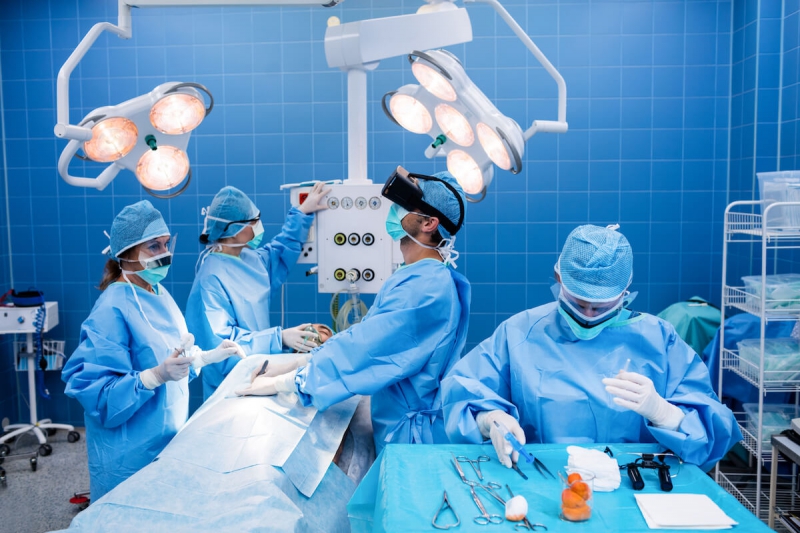The incidence of the disease increases with age and it can be seen in 50% of the society.
Why does it occur;
- Although the exact cause is unknown;
- Hereditary predisposition
- Constipation
- Overstrain
- Age
- Diarrhea
- Pregnancy
- Alcohol
- Fermented and fizzy drinks
- Standing or sitting for a long time
- Excessively spicy food consumption
can cause hemorrhoids.
What are the symptoms;
- Bleeding
- Pain
- Swelling
- Itching
- Discharge
- Burning and Wet Feeling
Diagnosis;
The diagnosis of hemorrhoidal disease is easily made by examination. Anoscopic examination is essential.
Anal cancers, ulcerative colitis and rectal prolapse should be considered in addition to benign diseases of the anal canal. Colonoscopic examination should be done in necessary cases.
Hemorrhoidal disease is examined under two main headings as internal and external hemorrhoids according to the location in the anal canal.
Hemorrhoidal disease is classified into 4 stages according to symptoms and location.
Stage 1: There is bleeding and itching in the anus.
Stage 2: In addition to bleeding and itching, pain begins to occur. Swelling occurs in the anus during defecation. It disappears after defecation.
Stage 3: In addition to stage 1 and stage 2, sagging hemorrhoids must be manually pushed to return to their normal position after defecation.
Stage 4: In addition to stage 1 and stage 2, sagging hemorrhoids cannot be pushed into the normal position.
Treatment;
Treatment of hemorrhoidal disease varies according to its location and stage. Appropriate treatment selection is essential for a successful recovery.
In our clinic, all kinds of treatments related to hemorrhoidal disease are successfully performed. However, the important thing is the choice of treatment according to the patient.
Medical treatment should be tried in specific cases. Coercive therapy can lead to disease progression and narrowing of treatment options.
Infrared Coagulation:
It is very successful in 1st and 2nd stage internal hemorrhoids. It does not require anesthesia. It causes heat damage to the glomerulus that feeds the hemorrhoid, causing the hemorrhoid to shrink.
Band Ligation:
It is an effective treatment for 1st, 2nd and 3rd stage internal hemorrhoids. It is known as the fixation method. With the help of a device developed for this method, a rubber band is placed on the base of the hemorrhoid, and it is ensured that the hemorrhoid to fall off by itself. It does not require anesthesia.
Sclerotherapy:
It is used in the treatment of 1st and 2nd stage internal hemorrhoids. It is a method that we do not prefer because of its side effects and extreme pain. It is a form of treatment performed by injecting a sclero therapeutic substance (contractive, destructive) into the hemorrhoid.
De Longo (Stapler):
It is preferred in 3rd stage internal hemorrhoids especially with prolapse. It should not be preferred in the presence of extensive external hemorrhoids or coexisting anal disease (fissure etc.). With the help of a disposable instrument called a stapler, a circular tissue is excised and the sagging hemorrhoidal tissue is pulled up. In this method, the feeding of the hemorrhoid is reduced. Over time, internal and external hemorrhoids shrink.
It can be performed under general or regional anesthesia. Post-op pain is very low. Very good results are obtained in appropriate cases.
Hemorrhoidal Artery Ligation:
It is a successful technique especially in the 1st, 2nd and 3rd stages with bleeding and intense internal hemorrhoids.
The method is based on finding and connecting the arteries feeding the hemorrhoids using a doppler ultrasound device. There is almost no pain in the post-op period. Medical dressing is not needed and recurrence is very rare.
Ligasure:
It is used in 3rd and 4th stage internal and external hemorrhoids. It is known as a stitchless and bloodless surgery. With a special device called Ligasure and a device connected to it, the hemorrhoid is removed without the need for scalpel and stitches. It is a form of treatment that we use quite often. In the post-op period, the pain is less and the operation time is considerably shorter.
Laser:
It is used for coagulation in stage 1 and stage 2 hemorrhoids and excision in 3rd and 4th stage hemorrhoids.
With the Nd Yag Laser device, especially 1st and 2nd stage hemorrhoids can be successfully treated. We do not recommend using the laser for excision purposes. We prefer a device that uses high frequency sound waves for excision. In this way, wound healing is faster and the risk of infection is reduced.
Surgery:
It is preferred in 3rd and 4th stage internal and external hemorrhoids. Scissors, cautery, ligasure and laser can be used during the operation. There are two different techniques as closed and open hemorrhoidectomy. We prefer the open technique using ligasure or cautery. Appropriate technique and good surgery reduce post-op pain and prevent complications.
What is Body Mass Index?
Body mass index is a parameter that indicates whether an adult's weight is normal according to his height. In the Body Mass Index table shown below, you can find out whether your weight is ideal in the area where your weight in kilograms and height in meters intersect. If your current weight is below or above your ideal weight, the way to reach this weight is not to lose or gain too much weight in a short time, but to provide healthy weight loss / gain and maintain this weight in the long term
Body Mass Index Chart
How is the Body Mass Index calculated?
Body mass index is obtained by dividing body weight by the square of height. The resulting value is evaluated within the following ranges.
0-18.4: Thinness
18.5-24.9: Normal
25.0-29.9: Overweight
30.0-34.9: Obese Class I
35.0-40: Obese Class II
40.0 and above: Obese Class III

